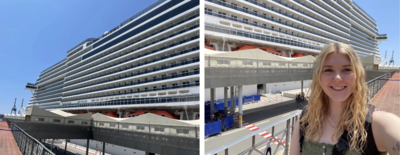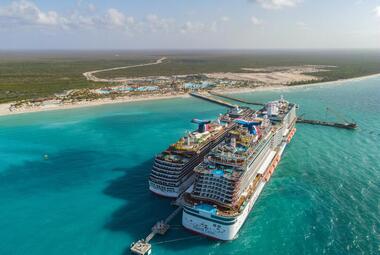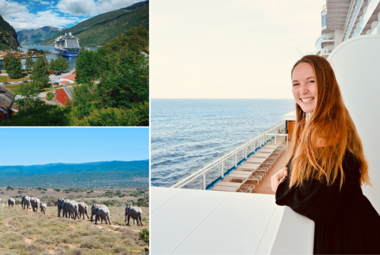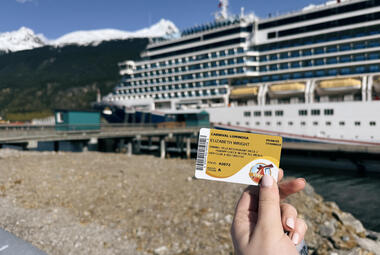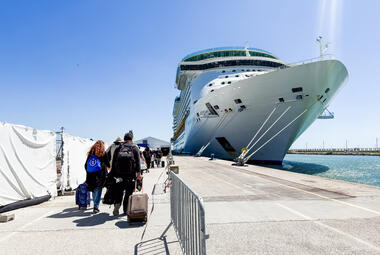If you are used to cruising from North America, you should not expect the same experience when taking a cruise to Europe.
For starters, your itinerary is most likely going to be port intensive, meaning that you will be spending less time onboard the ship and more time exploring culturally rich destinations.
Up until this cruise, I had only taken Caribbean and Bahamas cruises-- 10 of them to be exact! I was excited to board my first-ever Mediterranean cruise onboard MSC Seashore from Genoa.
Read more: 30 cruise ship embarkation tips and tricks
Not only were the ports of call new to me, but I had never been on MSC, either! As someone who has only previously sailed with Disney Cruise Line and Royal Caribbean, I knew that sailing on an Italian line would be different. That, however, is what I wanted!
Here's how the boarding process was different from anything I experienced sailing from North America.
Pre-cruise exhaustion

Prior to boarding MSC Seashore, I spent a week in London with my family celebrating my cousin's wedding. I had such a great and busy trip, so when I flew to Genoa, I was already pretty tired.
Even though I did not have to worry about jet lag, I had never felt so poorly rested prior to a cruise. This worried me because I knew that my itinerary is port intensive. Out of six full days, only one is at sea, meaning that there's not much time to rest.
While you do not have to stay in Europe for a full week before your cruise, you will want to make sure that you arrive a few days prior to embarkation. You may find that your ship is departing from a city that makes a great pre-cruise destination.
Moreover, in North America, it is relatively easy to find another flight if you end up missing yours for whatever reason (you should, however, still fly in the night before).
The last thing you want to do is begin your European vacation scrambling to find another long haul flight that will get you to your departure city on time. Plus, this will give your body a little bit more time to adjust to the time change, so you hopefully will not be as tired on embarkation day.
Speaking of flights, when I was onboard my RyanAir flight from London to Genoa, I noticed how different traveling in Europe is compared to in America before even getting to my cruise ship! I was startled when they started pushing a cart through the cabin selling duty free items, such as cigarettes, perfume, and alcohol.
Read more: The 13 best cruise tips the pros use all the time
You need to plan how you are going to get to the terminal in advance
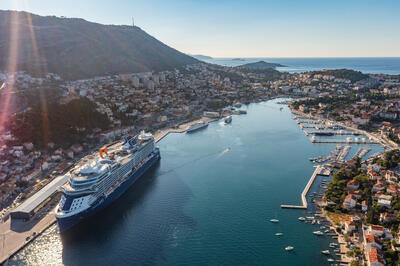
This is true for all cruises; however, when you are in a foreign country and unable to speak and read the language, you will need a solid plan before leaving the hotel room. Since I do not speak Italian, I did not want to bank on being able to walk outside and call a cab, especially since I had trouble communicating with the taxi driver at the airport.
Had I not have had so much luggage, I probably would have taken public transportation or walked; however, due to the wedding, I had a couple of formal dresses that took up a lot of space in my suitcase and had to bring a checked and carry-on bag. Thankfully, the receptionist at the hotel was able to call a cab for me, and I was able to get to the port in less than ten minutes!
If you are staying in Rome and cruising from, for instance, Civitavecchia, you may not want to pay for a cab or driver to take you the hour drive, so public transit will be the more cost effective option.
It is imperative that you research your options and, if relying on public transportation, knowing the schedule and which departure you would like to take.
Interport sailing
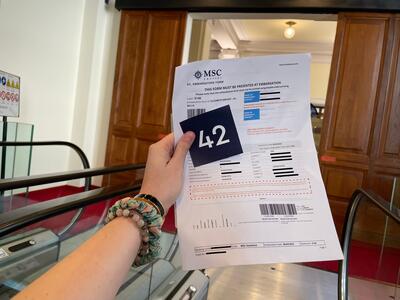
I knew that the ship had a mix of people disembarking, embarking, and venturing off to explore Genoa as a scheduled port of call. For that reason, I found the terminal to be less crowded than when I have boarded ships in North America. In fact, I was on the ship within thirty minutes, and waiting in line for security took the longest.
Upon arriving at the terminal, porters took my luggage as usual, and I was instructed inside. Despite showing up an hour early, I had no trouble getting onboard.
I was given the number "42" after speaking with the first set of terminal employees. but I am unsure what this was for, as I never needed it. After ascending up an escalator, my passport and boarding documents were checked by another set of individuals, and I was then told to wait in line to officially check in.
It is important to note that I had yet to go through security. I feel like this is one of the first things that I do when boarding a Caribbean cruise, so I found it surprising that it was the last step before making my way to the ship this time.
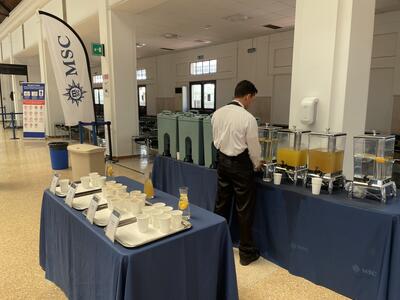
Before security, though, there was a table of refreshments, which I found to be a nice touch! There was sparkling water, still water, orange juice, and pineapple juice. Since there were not a ton of people in the terminal, there was not a line or groups of people crowding around the table.
The day after I embarked, we were docked in Civitavecchia. As I left the ship to meet my excursion guide, I walked past the suitcases of disembarking guests, and when I exited the terminal, crew members were instructing passengers to the left for shore excursions and right for buses to the airport.
After a long day exploring Rome for the first time, I boarded the ship to find that another muster drill was conducted for new passengers. Hearing the emergency alarm for the second day in a row was as annoying as you think!
Read more: Everything I loved and hated about my European cruise with Royal Caribbean
Prominence of different languages
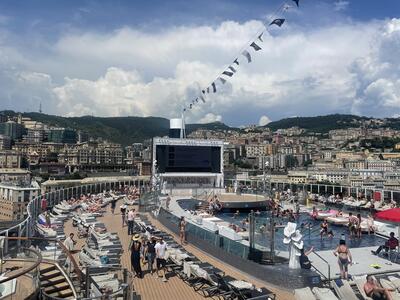
From the moment I arrived at the terminal, I could tell that there was more of an international crowd of passengers. While waiting to check in, I heard tons of different languages. In fact, I did not hear anyone speak English other than the port employees.
Plus, all announcements were made in multiple different languages to accommodate the diverse crowd, and even a crew member leading an activity near the pool deck spoke different languages. Note that this means the announcements will take longer.
On cruises to the Caribbean, I am used to announcements being made in English and Spanish, and outside of that, I rarely, if ever, hear any other languages being spoken.
How was boarding similar?
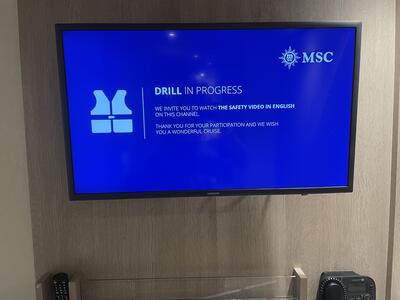
I was honestly expecting my cabin to be ready as soon as I boarded the ship, as there is less turnaround on interport sailings! This, however, was not the case, and I was unable to immediately head to my stateroom to drop my carry-on bags off. To pass the time, I went up to the buffet to grab something to eat.
Speaking of the buffet, it was not nearly as crowded as I have seen it on embarkation day on other ships! Again, this has to due with the fact that 3,000+ guests were not boarding at once. A good percentage of passengers were ashore in Genoa, meaning that there were less people flocking to the buffet for lunch.
Likewise, when I walked past the youth club, I did not notice swarms of parents trying to register their children.
Moreover, like in North America, I had to complete the muster drill prior to sail away. I had to watch a video in my stateroom at a specific time and then visit my assigned muster station directly after the video's conclusion. If guests boarded in an earlier port, they were not required to complete the muster drill an additional time and could disregard all announcements.
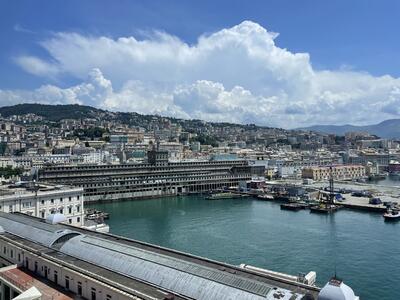
Regardless of whether it was their first day on the cruise on their fourth, everyone, including myself, headed to the top deck to watch the ship depart Genoa, and it truly was a beautiful sail away!


